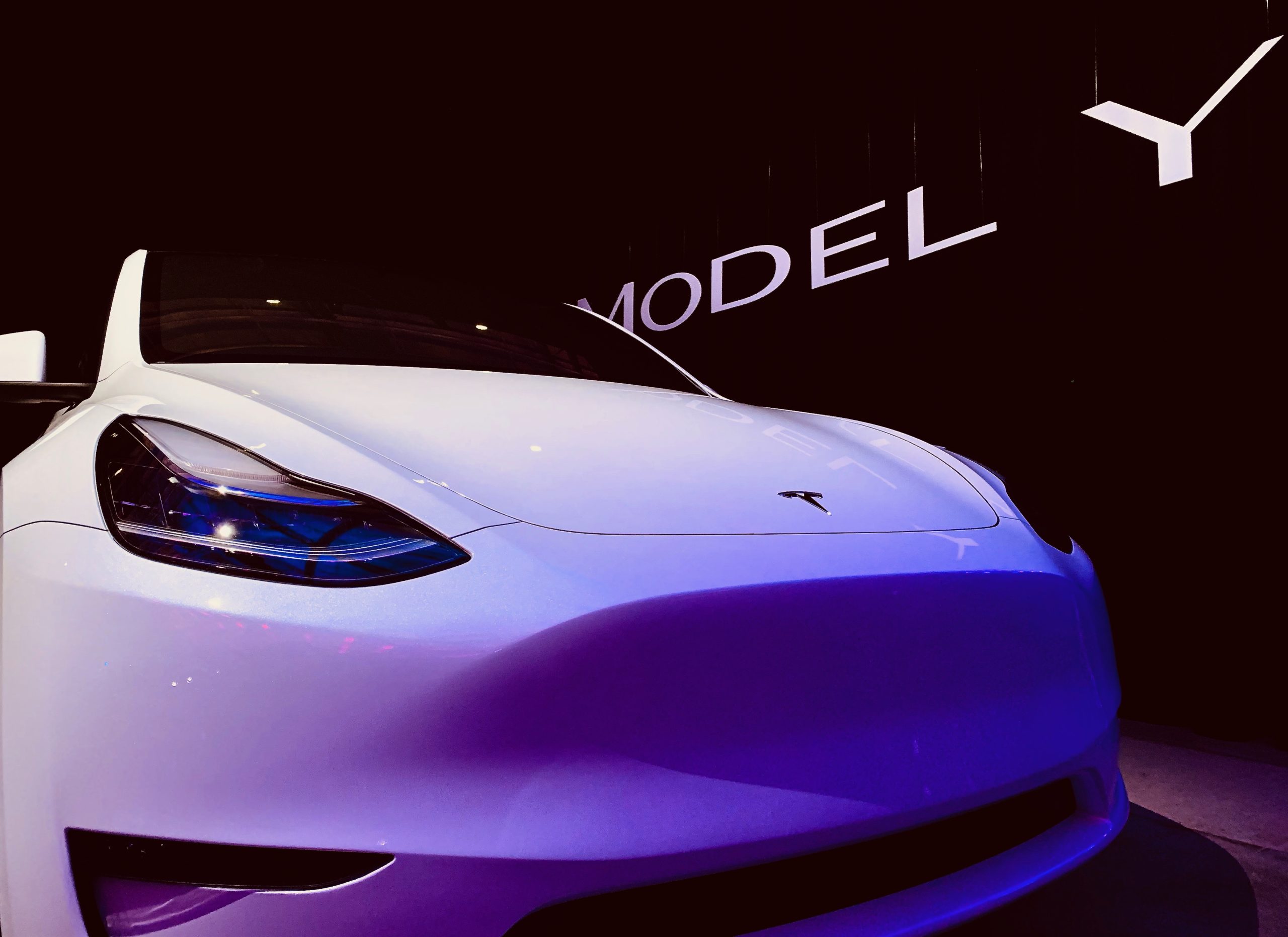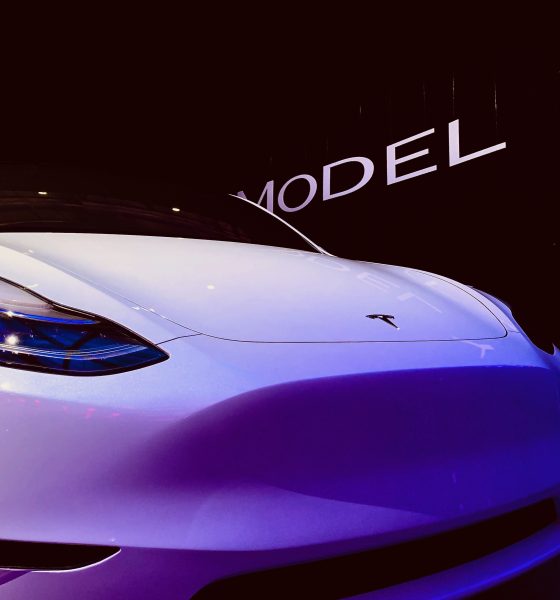

News
Tesla Model Y first deliveries expected in February, Performance variants first
Tesla Model Y deliveries will reportedly start next month with customers who ordered the Performance variant of the much-awaited electric crossover getting the first dibs. The Long Range All-Wheel Drive version will arrive in March or April, and deliveries of the full lineup set to be completed by Q3 this year.
The latest Model Y news was shared by Redditor u/Quaf4 who got a call from an employee at Tesla Oakville in Ontario, Canada on Tuesday.
“I just received a phone call from an employee at Tesla Oakville, ON who was calling to guide me through the upcoming delivery process for my Model Y. I asked when to expect delivery and he told me that the Performance variant will start deliveries next month, and that I could expect my LR AWD in March/April,” u/Quaf4 wrote. “Interesting to hear it officially from an employee, rather than pure speculation from media sources. NEXT MONTH.”
UPDATED: Tesla $TSLA shares soar following confirmation of Model Y first deliveries and breakout Q4 2019 results
With this confirmation from a presumed Tesla employee, it appears Tesla CEO Elon Musk and his team underpromised and will over-deliver in terms of the Model Y production schedule. The electric crossover was first set to hit production in Fall 2020 and it was later moved up to Summer 2020. And now, it seems Model Y buyers will get their units sooner than expected.
Every Tesla Model Y sighting so far: Subtle refinements from unveiling event to today
If Tesla indeed delivers soon, the Silicon Valley-based electric carmaker might have hit a jackpot in terms of production efficiency. Elon Musk said during a recent Gigafactory 3 event in China that they use advanced manufacturing technologies for the Model Y.
“Model Y will also have some advanced manufacturing technology that we will reveal in the future. I think it will be exciting to show the kind of manufacturing technology associated with the Model Y and it will be exciting to learn about these technologies,” Musk said.
There have been Tesla Model Y rumors recently that deliveries will happen in two weeks and this latest information from a soon-to-be Tesla Model Y owner seems to corroborate that earlier report. Coincidentally, the Tesla Q4 2019 Financial Results and earnings call is set for 3:30 PM PST on Jan. 29 and the electric vehicle community might officially hear an announcement they have been waiting for from Elon Musk and his team about the imminent Model Y delivery.
The confirmation from the Tesla employee is also consistent with the estimate that the Model Y Performance version will be delivered soon following the publication of its certificate from the California Air Resources Board (CARB) on Jan. 9. Tesla fans recalled that the first deliveries of the Model 3 in 2017 also happened less than a month after its CARB certificate was published. Likewise, the VINs have also been registered by Tesla with the National Highway Traffic Safety Administration (NHTSA), another hint that Model Y deliveries are really happening soon.
The recent sightings of Tesla Model Y units that are almost production-ready could have been a big clue that the next big thing of Tesla will soon officially hit the road. Perhaps imminent delivery could also be the reason why a Tesla employee allowed a Tesla Model 3 owner to check out the interior of the Model Y while Supercharging in San Luis, Obispo California over the weekend.
Tesla’s Fremont factory will produce the Model Y units but the carmaker is also getting ready for its production at the Gigafactory 3 in Shanghai. Once operational, the Gigafactory 4 in Germany will also produce about 150,000 Model Ys during its initial phase of production.

Elon Musk
Elon Musk and Tesla AI Director share insights after empty driver seat Robotaxi rides
The executives’ unoccupied tests hint at the rapid progress of Tesla’s unsupervised Robotaxi efforts.

Tesla CEO Elon Musk and AI Director Ashok Elluswamy celebrated Christmas Eve by sharing personal experiences with Robotaxi vehicles that had no safety monitor or occupant in the driver’s seat. Musk described the system’s “perfect driving” around Austin, while Elluswamy posted video from the back seat, calling it “an amazing experience.”
The executives’ unoccupied tests hint at the rapid progress of Tesla’s unsupervised Robotaxi efforts.
Elon and Ashok’s firsthand Robotaxi insights
Prior to Musk and the Tesla AI Director’s posts, sightings of unmanned Teslas navigating public roads were widely shared on social media. One such vehicle was spotted in Austin, Texas, which Elon Musk acknowleged by stating that “Testing is underway with no occupants in the car.”
Based on his Christmas Eve post, Musk seemed to have tested an unmanned Tesla himself. “A Tesla with no safety monitor in the car and me sitting in the passenger seat took me all around Austin on Sunday with perfect driving,” Musk wrote in his post.
Elluswamy responded with a 2-minute video showing himself in the rear of an unmanned Tesla. The video featured the vehicle’s empty front seats, as well as its smooth handling through real-world traffic. He captioned his video with the words, “It’s an amazing experience!”
Towards Unsupervised operations
During an xAI Hackathon earlier this month, Elon Musk mentioned that Tesla owed be removing Safety Monitors from its Robotaxis in Austin in just three weeks. “Unsupervised is pretty much solved at this point. So there will be Tesla Robotaxis operating in Austin with no one in them. Not even anyone in the passenger seat in about three weeks,” he said. Musk echoed similar estimates at the 2025 Annual Shareholder Meeting and the Q3 2025 earnings call.
Considering the insights that were posted Musk and Elluswamy, it does appear that Tesla is working hard towards operating its Robotaxis with no safety monitors. This is quite impressive considering that the service was launched just earlier this year.
Elon Musk
Starlink passes 9 million active customers just weeks after hitting 8 million
The milestone highlights the accelerating growth of Starlink, which has now been adding over 20,000 new users per day.

SpaceX’s Starlink satellite internet service has continued its rapid global expansion, surpassing 9 million active customers just weeks after crossing the 8 million mark.
The milestone highlights the accelerating growth of Starlink, which has now been adding over 20,000 new users per day.
9 million customers
In a post on X, SpaceX stated that Starlink now serves over 9 million active users across 155 countries, territories, and markets. The company reached 8 million customers in early November, meaning it added roughly 1 million subscribers in under seven weeks, or about 21,275 new users on average per day.
“Starlink is connecting more than 9M active customers with high-speed internet across 155 countries, territories, and many other markets,” Starlink wrote in a post on its official X account. SpaceX President Gwynne Shotwell also celebrated the milestone on X. “A huge thank you to all of our customers and congrats to the Starlink team for such an incredible product,” she wrote.
That growth rate reflects both rising demand for broadband in underserved regions and Starlink’s expanding satellite constellation, which now includes more than 9,000 low-Earth-orbit satellites designed to deliver high-speed, low-latency internet worldwide.
Starlink’s momentum
Starlink’s momentum has been building up. SpaceX reported 4.6 million Starlink customers in December 2024, followed by 7 million by August 2025, and 8 million customers in November. Independent data also suggests Starlink usage is rising sharply, with Cloudflare reporting that global web traffic from Starlink users more than doubled in 2025, as noted in an Insider report.
Starlink’s momentum is increasingly tied to SpaceX’s broader financial outlook. Elon Musk has said the satellite network is “by far” the company’s largest revenue driver, and reports suggest SpaceX may be positioning itself for an initial public offering as soon as next year, with valuations estimated as high as $1.5 trillion. Musk has also suggested in the past that Starlink could have its own IPO in the future.
News
NVIDIA Director of Robotics: Tesla FSD v14 is the first AI to pass the “Physical Turing Test”
After testing FSD v14, Fan stated that his experience with FSD felt magical at first, but it soon started to feel like a routine.

NVIDIA Director of Robotics Jim Fan has praised Tesla’s Full Self-Driving (Supervised) v14 as the first AI to pass what he described as a “Physical Turing Test.”
After testing FSD v14, Fan stated that his experience with FSD felt magical at first, but it soon started to feel like a routine. And just like smartphones today, removing it now would “actively hurt.”
Jim Fan’s hands-on FSD v14 impressions
Fan, a leading researcher in embodied AI who is currently solving Physical AI at NVIDIA and spearheading the company’s Project GR00T initiative, noted that he actually was late to the Tesla game. He was, however, one of the first to try out FSD v14.
“I was very late to own a Tesla but among the earliest to try out FSD v14. It’s perhaps the first time I experience an AI that passes the Physical Turing Test: after a long day at work, you press a button, lay back, and couldn’t tell if a neural net or a human drove you home,” Fan wrote in a post on X.
Fan added: “Despite knowing exactly how robot learning works, I still find it magical watching the steering wheel turn by itself. First it feels surreal, next it becomes routine. Then, like the smartphone, taking it away actively hurts. This is how humanity gets rewired and glued to god-like technologies.”
The Physical Turing Test
The original Turing Test was conceived by Alan Turing in 1950, and it was aimed at determining if a machine could exhibit behavior that is equivalent to or indistinguishable from a human. By focusing on text-based conversations, the original Turing Test set a high bar for natural language processing and machine learning.
This test has been passed by today’s large language models. However, the capability to converse in a humanlike manner is a completely different challenge from performing real-world problem-solving or physical interactions. Thus, Fan introduced the Physical Turing Test, which challenges AI systems to demonstrate intelligence through physical actions.
Based on Fan’s comments, Tesla has demonstrated these intelligent physical actions with FSD v14. Elon Musk agreed with the NVIDIA executive, stating in a post on X that with FSD v14, “you can sense the sentience maturing.” Musk also praised Tesla AI, calling it the best “real-world AI” today.








